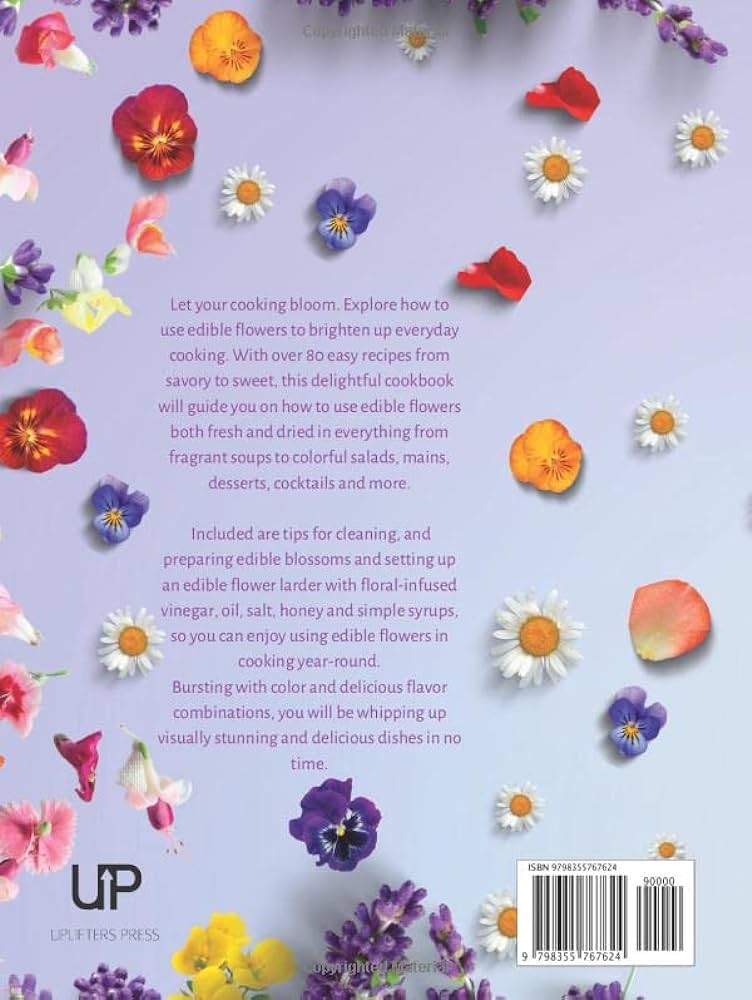Edible flowers have been used in culinary arts for centuries, adding both visual appeal and unique flavors to dishes. Incorporating these colorful blossoms into your cooking not only enhances the presentation of your meals but also introduces delightful floral notes to your palate. In this guide, we will explore the art of cooking with edible flowers, from selecting the right blooms to preparing delectable floral-infused recipes.
Choosing Edible Flowers
Before embarking on your culinary journey with edible flowers, it’s essential to ensure that the blooms you select are indeed edible. Not all flowers are safe for consumption, and some may even be toxic. To guarantee the safety and quality of the flowers you plan to use in your cooking, refer to a reliable list of edible flowers or consult with a knowledgeable florist or gardener. Some popular options for edible flowers include:
- Roses
- Lavender
- Nasturtiums
- Violets
- Calendula
- Hibiscus
Preparing Edible Flowers
Once you’ve procured your edible flowers, it’s essential to prepare them properly before incorporating them into your dishes. Here are a few key steps to ensure that your edible flowers are ready for culinary use:
- Gently rinse the flowers under cold water to remove any dirt or insects.
- Pat the flowers dry with a paper towel to eliminate excess moisture.
- If desired, carefully remove the sepals, pistils, and stamens from the flowers, as they can have a bitter taste.
By taking these simple preparatory measures, you can ensure that your edible flowers are clean, dry, and free of any undesirable elements, allowing their natural beauty and flavor to shine in your culinary creations.
Ways to Use Edible Flowers in Cooking
Edible flowers can be used in a variety of ways to add a burst of color and flavor to your cooking. Some popular methods for incorporating edible flowers into your culinary endeavors include:
- Using them as garnishes for salads, soups, and main dishes, adding a touch of elegance to your presentations.
- Infusing them into syrups, vinegars, or oils to capture their delicate flavors and aromas for use in dressings and marinades.
- Incorporating them into baked goods such as cakes, muffins, and scones to introduce a subtle floral essence to your sweet treats.
- Freezing them into ice cubes for a visually stunning addition to beverages and cocktails.

Credit: sownsow.com
Recipes Featuring Edible Flowers
To inspire your culinary adventures with edible flowers, here are two delightful recipes that showcase the beauty and flavor of these floral gems:
Rose Petal Jam
Ingredients:
| Ingredients | Quantity |
|---|---|
| Fresh rose petals | 2 cups |
| Granulated sugar | 3 cups |
| Fresh lemon juice | 1/4 cup |
| Water | 2 cups |
Instructions:
- Thoroughly wash the rose petals and pat them dry with a paper towel.
- In a saucepan, combine the water and sugar, and bring the mixture to a gentle boil.
- Once the sugar has dissolved, add the rose petals and lemon juice to the saucepan.
- Simmer the mixture over low heat, stirring occasionally, until it reaches a jam-like consistency.
- Remove the saucepan from the heat and allow the rose petal jam to cool before transferring it to sterilized jars for storage.
Lavender Lemonade
Ingredients:
| Ingredients | Quantity |
|---|---|
| Fresh lavender flowers | 3 tablespoons |
| Granulated sugar | 1 cup |
| Boiling water | 1 cup |
| Freshly squeezed lemon juice | 1 cup |
| Cold water | 4 cups |
Instructions:
- Place the lavender flowers in a heatproof bowl and pour the boiling water over them.
- Allow the lavender to steep in the hot water for about 20 minutes, then strain out the flowers.
- In a pitcher, combine the lavender-infused water, sugar, lemon juice, and cold water.
- Stir the mixture until the sugar is fully dissolved.
- Refrigerate the lavender lemonade until chilled, then serve over ice, garnished with fresh lavender flowers.
By incorporating edible flowers into these delightful recipes, you can elevate your culinary creations with a touch of floral charm and flavor. Whether you’re hosting a special gathering or simply indulging in a moment of culinary creativity, cooking with edible flowers adds a unique and elegantly whimsical touch to your kitchen endeavors.

Credit: www.amazon.com
Final Thoughts
As you explore the art of cooking with edible flowers, keep in mind that each bloom carries its own distinct flavor profile and visual allure. By experimenting with different varieties of edible flowers and discovering creative ways to incorporate them into your recipes, you can unlock a world of culinary inspiration that celebrates the beauty of nature and the artistry of cuisine.
From vibrant rose petal jams to refreshing lavender lemonades, the allure of edible flowers invites you to infuse your cooking with a touch of floral finesse, transforming ordinary dishes into extraordinary works of culinary art.
Frequently Asked Questions Of How To Cook Edible Flowers: A Delicious Guide To Preparing Floral Delights
Can All Flowers Be Cooked?
Yes, most edible flowers can be cooked and used in various culinary preparations.
Are There Any Poisonous Flowers That Should Not Be Consumed?
Yes, there are several flowers that are toxic and should not be consumed. It is important to only use edible flowers in cooking.
What Are Some Popular Edible Flowers Used In Cooking?
Some popular edible flowers used in cooking include lavender, rose petals, marigold, and nasturtiums.
How Do I Prepare Edible Flowers For Cooking?
To prepare edible flowers for cooking, gently wash them in cool water and remove any stems or leaves. Use them fresh or dry them for later use.
